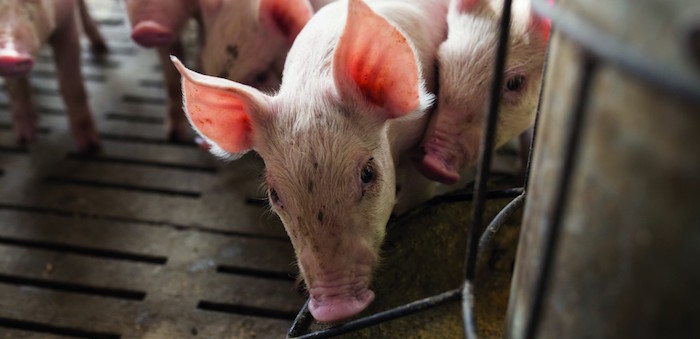The NPA has responded to inaccuracies reported in the national media’s take on the announcement of new antibiotic targets for the livestock sector.
From the pig sector’s the headlines that matter from last Friday’s announcements at a special Responsible Use of Medicines in Agriculture (RUMA) alliance conference in London, were:
- A 34% reduction in pig usage of antibiotics from 278 mg/PCU in 2015 to 183 mg/PCU in 2016
- A 73% reduction in use of critically important antibiotics from 1.0 mg/PCU in 2015 to 0.3 mg/PCU in 2016, representing just 0.1% of total antibiotic use
- A commitment to reduce usage by 62% to 99mg/PCU by 2020 in annual stages.
However, some of the reporting in the national media focused on the relative high usage of the pig industry and misleading claims about the reasons for last year’s reduction, claims driven by campaign groups like the Alliance to Save Our Antibiotics (ASOA).
A Guardian article, for example, stated that, in the UK, the main use of antibiotics in pig rearing is to treat post-weaning diarrhoea among piglets, a ‘frequent complaint when piglets are taken from their mothers too soon’. An alternative to antibiotic use would be to leave piglets with their mothers for a few weeks longer, but this is unpopular because it would incur higher costs for the pig farmers, the article said, adding that that reasons for the reduction in antibiotic use in pig farming ‘is believed to be the increase in use of zinc oxide, which studies have suggested can increase antimicrobial resistance and encourage the growth of the superbug MRSA’.
It quoted ASOA’s Suzi Shingler, who said: “Using zinc oxide to cut antibiotic use is not a sustainable solution and contributes to antibiotic resistance. The pig industry is suggesting that a ban on zinc oxide may lead to more antibiotic use again, but that would also be unacceptable.
“Instead, pig farmers should be looking to reduce post-weaning diarrhoea by improving husbandry, including moving to later weaning and using breeds of sows that are able to care better for the number of piglets they produce.”
NPA response
NPA senior policy Georgina Crayford responded by writing to the Guardian to put the record straight. Commentng on the claims about piglets being ‘taken from their mothers too soon’, she wrote:
“In reality weaning is a stressful time for piglets regardless of what age they are. The stress of the change from their sow’s milk to solid food, mixing with piglets from other litters and transportation to new accommodation makes piglets susceptible to E. coli and other organisms which cause diarrhoea. Since later weaning is not commercially viable and can be detrimental to the welfare of the sow, farmers employ numerous other measures to support piglets through this challenging stage of production enabling weaning at 28 days of age, as permitted by legislation.”
On the zinc oxide claims, she added: “It is disappointing that rather than praising the impressive reduction in antibiotic use in pig farming (a 34% drop between 2015 and 2016) the article incorrectly states that one of the reasons for the reduction is the increase in use of zinc oxide.
“While the use of zinc oxide in piglet diets in the post-weaning period is supporting reductions in antibiotic use on pig farms, ensuring piglet suffering is avoided, data from one of the major suppliers of piglet starter feed in the UK suggest that total zinc use is actually slightly declining. Since zinc oxide is a prescription-only medicine, veterinary oversight ensures it is used appropriately.”
The NPA acknowledges the relatively high historic usage of antibiotics but is highlighting the impressive efforts across the industry to cut usage since 2015 and the ‘bold and ambitious’ targets set out on Friday.
In the NPA’s response to the targets, chief executive Zoe Davies said: “It is true that, historically, the pig industry has been a relatively high user. There are many reasons for that, including the specific disease challenges the UK industry faces and a long period of poor prices for pork which prevented much needed reinvestment on farms.”




